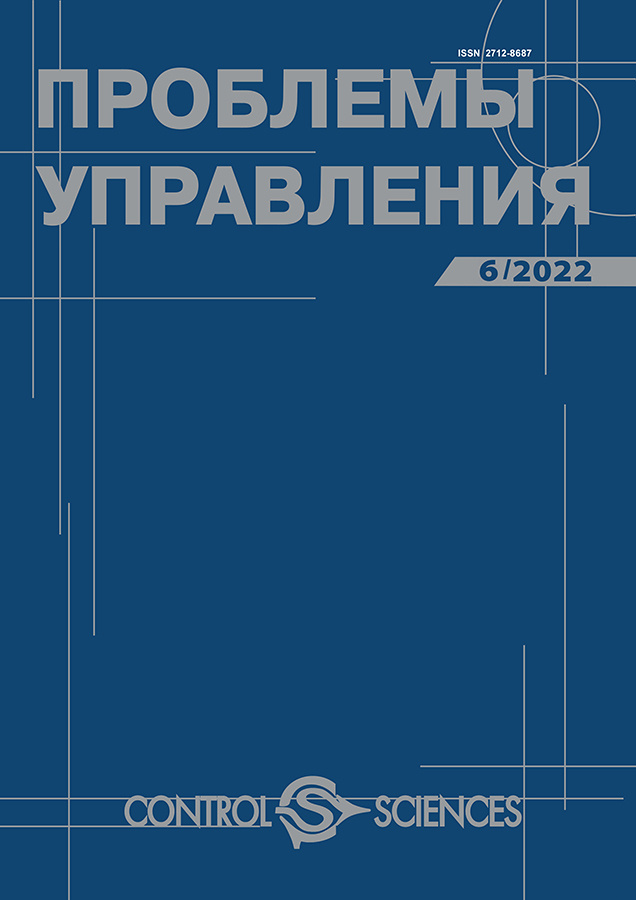编号 6 (2022)
Mathematical Problems of Control
Design of Integrated Rating Mechanisms Based on Separating Decomposition
摘要
 3-13
3-13


Control in Social and Economic Systems
A Strategic Management Model for Restructuring the Technological Core of an Economy
摘要
 14-25
14-25


Fuzzy Volatility Models with Application to the Russian Stock Market
摘要
 26-34
26-34


Control of Technical Systems and Industrial Processes
Estimating Industrial Process Stability by Whitney's Singularity Theory When Choosing a Sufficient Time-Sampling Frequency of the Control Signal
摘要
 35-41
35-41


Control of Moving Objects and Navigation
Analysis of Stress Exposures on Autonomous Navigation Conditions in Search Correlation-Extreme Navigation Systems
摘要
 42-58
42-58


Chronicle
15th International Conference on Management of Large-Scale System Development (MlLSD’2022)
摘要
The 15th International Conference on Management of Large-Scale System Development (MLSD’2022) was held on September 26–28, 2022, by Trapeznikov Institute of Control Sciences, Russian Academy of Sciences, with the support of the IEEE Russia Section. MLSD’2022 aimed to cover big data management issues, including big data use in various areas of management, as well as the standardization of methods, models, and tools for big data processing. The main theme of the conference was theoretical foundations for the strategic management of large-scale system development in the context of national security. The MLSD’2022 program included 18 plenary papers and 199 sectional papers of leading experts from 30 cities of Belarus, Kazakhstan, China, the USA, and Russia. Amongst them, 155 papers were selected, extended, and published electronically in IEEE Xplore.
 59-66
59-66











